

“Light that can pierce objects” is the most dazzling label of the Italian art giant Caravaggio, and light also constitutes an important element of the exhibition.
On December 11, the annual final exhibition of Pudong Art Museum - "Caravaggio and the Miracle of the Baroque" opened. As the first Caravaggio-themed exhibition in China, this exhibition is also the first collaboration between the Pudong Art Museum and the Borghese Gallery in Rome, which has the largest collection of original Caravaggio works in the world.
The Paper Art saw at the scene that six Caravaggio works were displayed in the last exhibition hall, giving people a dazzling light. More than 60 paintings by Caravaggio and more than 40 other "Baroque School" artists present a panoramic view of Baroque art, showing brilliant light and shadow in dramatic contrasts of light and dark.

exhibition site
Caravaggio (Michelangelo Merisi da Caravaggio, 1571-1610) was a famous painter in Italian history. He was active in Rome, Naples, Genoa, Malta and Sicily from 1593 to 1610. He is usually considered to be the last master of the Renaissance. and the pioneer of Baroque painting.
The Paper learned at the exhibition site that among the six Caravaggio works on display in Shanghai, two are from the Borghese Gallery, and the other four are "St. John the Baptist" collected by the National Gallery of Ancient Art in Rome. ”, “Portrait of Antonio Martelli, Knight of Malta” from the Uffizi Gallery in Florence, “Crown of Thorns” from the Popular Bank of Vicenza and “Maffeo Barberini, Pontifical General Registrar” from a private collection in Florence portrait".

Caravaggio's work "Boy with Fruit Basket" at the exhibition
The exhibition is co-curated by Francesca Cappelletti, Director of the Borghese Gallery in Rome, and Francesco D'Arelli, Director of the Cultural Section of the Italian Consulate General in Shanghai. "Through the exhibition, China and Italy, especially Shanghai and Rome, jointly praised another kind of beautiful experience, the beauty of Baroque. Baroque works themselves are symbols of miracles, and their large size is awe-inspiring." Da Renli said, "Caravaggio's unique style and his six masterpieces are the focus of the entire exhibition. At the same time, the audience will also be exposed to works from different Italian Baroque schools. Among them are 18 works from the Roman School. There are 17 works from the Emilia School, 9 from the Tuscany-Marche School and 2 from the Neapolitan School, for a total of 42 painters on display.”
Li Minkun, deputy general manager of Lujiazui Group and chairman of Pudong Art Museum, said in his opening speech: "China and Italy are both ancient civilizations. They use art to build a bridge of communication, build a panoramic Baroque era, and show the vitality of an era full of miracles."

exhibition site
"Light that can pierce the object" is Caravaggio's most dazzling label. Light also constitutes an important element of the exhibition. Whether it is the light in the painting or the light setting from light to dark in the exhibition hall, it takes the audience from Baroque small works to Entering the large-scale works, starting from the Roman School, first going north and then south, passing through the Emilia School (Bologna), Veneto Region, Lombardy Region (Milan, Venice), until In the darkness, we entered the climax of the exhibition - the last exhibition hall, surrounded by six Caravaggio works.

Exhibition site, "Boy Holding Fruit Basket" in the dark
In the darkness, six Caravaggio works bring their own light
"In almost complete darkness, you can see Caravaggio's contrast between light and dark, and see which places are really illuminated." In the darkness, your footsteps will unconsciously move towards "Boy with Fruit Basket", which It is from the collection of the Borghese Gallery in Rome. It is also the first appearance of this Italian national treasure in a domestic art museum. This work was created around 1595 and is a relatively early creation of Caravaggio.

"Caravaggio and the Miracle of the Baroque" exhibition view, Pudong Art Museum, 2023
When Caravaggio arrived in Rome in 1592 at the age of 21, he was just an unknown Lombard. He worked in the studios of Antivito Gramatica and Giuseppe Cesari, known as the Cavalier d'Arpino - respectively. Specializing in paintings of human heads and fruits and flowers - these two growth experiences really help to understand the creation of Caravaggio's early works.

Hartford Master, "Vase, Fruit and Vegetables"
The "Vase, Fruit and Vegetables" by the Hartford master displayed in another exhibition hall of the exhibition has the same expression of fruits and baskets as "Boy Holding a Fruit Basket". The boy holds a basket filled with autumn leaves and fruits (such as apples and grapes). These fruits possess some of the typical imperfections of nature, and according to some scholars, these autumn fruits symbolize the passing of time, the appearance of aging, and death. In this work, light undoubtedly plays a major role; it penetrates from behind the boy and reflects on the basket, giving the fruits in the basket various irregularities and imperfections - on the canvas, Caravaggio Demonstrating an ability to study the natural world with profound imitation, he kept in mind his Lombard and Venetian cultural roots and avoided aesthetic interpretations of natural objects.

Exhibition view Caravaggio's "Saint John the Baptist"
Another Caravaggio work from the Borghese Gallery is "St. John the Baptist". This work was created in 1609-1610 when he was on the run from a fight. It was also something he took with him on his way back to Rome. One of his works, which belongs to the last stage of his life. It is worth mentioning that, in order to obtain the church’s intercession, Caravaggio was prepared to dedicate it to Cardinal Scipione, the nephew of Pope Paul V (Camillo Borghese). Scipione Borghese. He not only built the Villa Borghese but was also the founder of today’s vast collection of the Borghese Museum. Even in 1610, when Caravaggio died and Rome was grieving, Paul V was thinking about how to collect more Caravaggio works. Therefore, the Borghese Museum currently has the largest collection of Caravaggio in the world. Qiao is famous for having the most works, and most of them were collected in the 1610s.

Portrait of Paul V at the exhibition
At least eight of Caravaggio's extant works feature St. John the Baptist. This exhibition at Pudong Art Museum displays two of them. The other one was created between 1604 and 1606 and comes from the National Gallery of Ancient Art in Rome. Caravaggio, who at this time was "the most famous painter in Rome", may have drawn on his precedent in depicting this subject, including Andrea del Sarto's "John the Baptist". "(painted in 1528, now in the Palazzo Pitti, Florence).

Caravaggio, "Saint John the Baptist", 1604-1606, Collection of the National Gallery of Ancient Art, Rome
The use of light is also reflected in "St. John the Baptist". Both works have a strong contrast between light and dark. The collection of the National Gallery of Ancient Art in Rome emphasizes the forward movement of the characters. He wants to leave the shadows of the background and enter a brighter place. Space. St. John the Baptist in this work has a slightly tragic tone, which may reflect the artist's innermost emotions. In addition to the light parts, Caravaggio's subtle portrayal of the dark parts shows his skill even more.

"Caravaggio and the Miracle of the Baroque" exhibition view, Pudong Art Museum, 2023
"Generally Caravaggio would paint the background first, and then focus on the highlighted highlights," Darenli said. At the same time, he believes that Caravaggio was preceded by Botticelli, Leonardo da Vinci, Michelangelo, Raphael and other masters, and it is a shortcut to continue their techniques. "But the greatest thing about Caravaggio is that even though his predecessors had already developed excellent techniques, he still found his own path of innovation." Darrenli said, "In Botticelli's paintings, you can see Every detail, every figure, but when we stand in front of Caravaggio’s paintings, our vision is automatically and spontaneously attracted to the illuminated parts.”

Caravaggio, "Crown of Thorns"
In "Crown of Thorns" created in 1602-1603, Caravaggio had already demonstrated his mature personal style. At this time, Caravaggio was in his "golden age" after completing "The Martyrdom of St. Matthew" and "The Calling of St. Matthew" in the Saint-Louis Church and causing a sensation. His "dark toneism" light and dark The method of contrast makes the subject matter highly dramatic, while the realism brought about by precise observation raises the emotional intensity to a new level. Against the dim background, the strong light falling on the figure pushes it to the foreground of the picture. The sharp contrast between light and dark creates a relief-like three-dimensional effect, making the scene in the picture look more realistic and full of tension. "At that time, Roman painters were attracted by this novel style of painting, especially young painters who gathered around Caravaggio, praising him as a unique imitator of nature and regarding his works as miracles."

Exhibition view of Caravaggio's "Portrait of Maffeo Barberini, Apostolic General Secretary"
In the exhibition are the "Portrait of Antonio Martelli, Knight of Malta" (1608-1609) and "Portrait of Maffeo Barberini, Apostolic General Registrar" (circa 1595). These two creations, displayed side by side and more than ten years apart, allow people to see the advancement of "dark toneism".
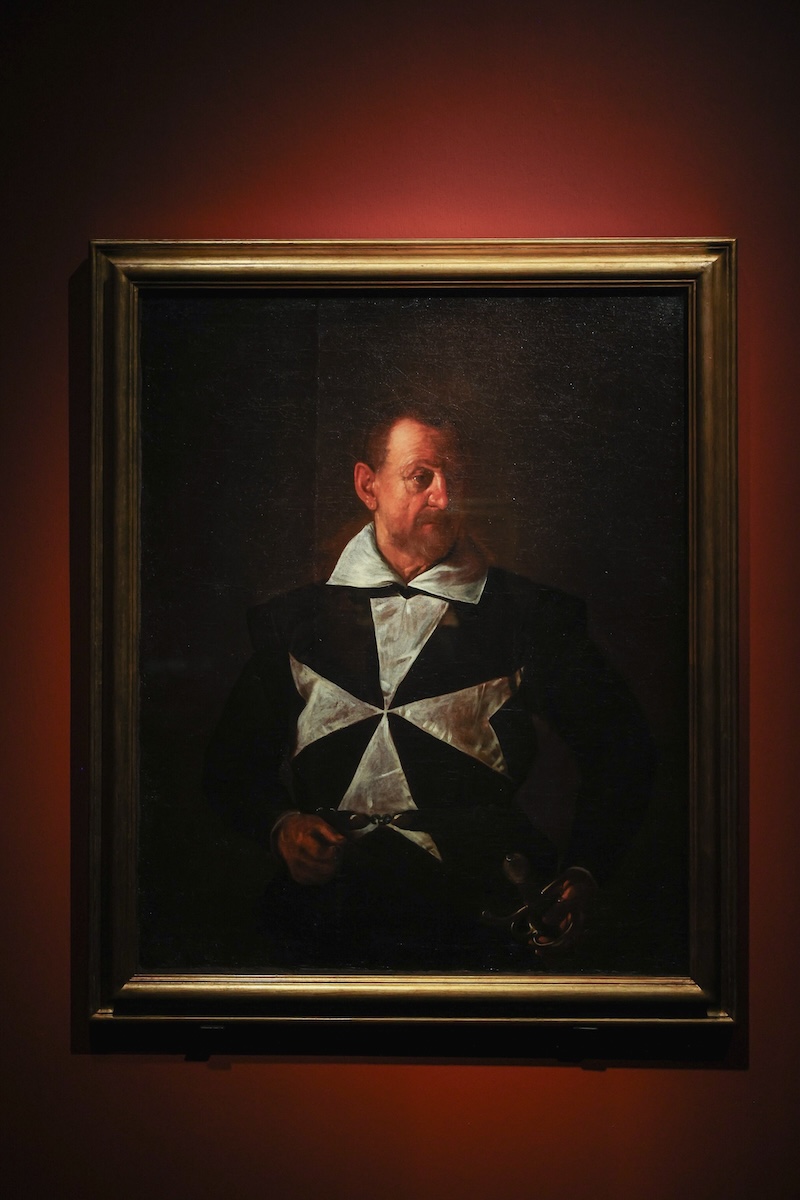
Exhibition view Caravaggio's "Portrait of Antonio Martelli, Knight of Malta"
Portrait of a Knight of Malta was created while Caravaggio was in exile from Rome. In 1606, Caravaggio stabbed his opponent with a sword in a duel. Officials issued a fatwa for him. Caravaggio quickly left Rome and began a flight that lasted until the end of his life. He first stayed briefly in Naples and then moved to Malta. In order to avoid bounty hunters, he also joined the local Knights of St. John in Malta. This was also a key creative stage for Caravaggio, during which he left many important works. "Portrait of a Knight of Malta" is one of the works Caravaggio created after arriving in Malta. The characters in the painting are in a dark background, but the white patterns on their clothes are very obvious, and the audience's attention is captured instantly.
In addition to the work itself, the gorgeous picture frames are also a highlight, especially the frame of the "Portrait of Apostolic General Registrar Maffeo Barberini", which is also a representative of the Baroque era.

"Caravaggio and the Miracle of the Baroque" exhibition view, Pudong Art Museum, 2023
Using painting and music to present Baroque art
In this exhibition, there are 59 works from the Borghese Gallery. In a sense, the Borghese family and the Borghese Gallery can be described as the "protagonists of the Baroque period." The title of the exhibition "Caravaggio and the Miracles of the Baroque" focuses on the Baroque.
In the history of European culture, "Baroque" usually refers to the most popular art style in Europe throughout the 17th century and the first half of the 18th century (about 1600-1750), especially in the fields of architecture and painting. Baroque is inherited from literature and art. Renaissance art, evolved into the Rococo style in the second half of the 18th century, and was replaced by neoclassicism in the early 19th century. Baroque influenced Europe for a long time, and it also influenced later German Romanticism. Baroque style, like Renaissance art, attaches great importance to the overall unity of design and effect, but Baroque style puts more emphasis on "sportiness and luxury" and opposes "simple symmetrical arrangement".

"Caravaggio and the Miracle of the Baroque" exhibition view, Pudong Art Museum, 2023
Baroque art originated in Italy. "In the early 17th century, Rome was the center of Baroque, where artists, architects, and designers gathered. Rome at that time was similar to Shanghai today, and it was an international metropolis." Darenli said, "Baroque The two most famous artists, Caravaggio and Annibale Carracci, were not born in Rome. Carracci came from Bologna, while Caravaggio came from a small town called Caravaggio. It is precisely because of the gathering of artists from all over the world that Baroque art spread to the Italian Peninsula at an unimaginable speed." Darrenli especially mentioned Baroque and China, "This Italian Baroque art exhibition in Shanghai can't help but remind people of other times. A sincere friendship between two scholars during the Ming Dynasty: Xu Guangqi (1562-1633), who was born in Shanghai, and Matteo Ricci (1552-1610), who arrived in China on August 7, 1582. More importantly, it It is also reminiscent of Matteo Ricci's exhortation, who insisted on shipping paintings by Italian and European artists of the time to China. Ricci opened the door for Italian art, especially Baroque art, to enter China in the last half century of the Ming Dynasty. ." Darenli said.
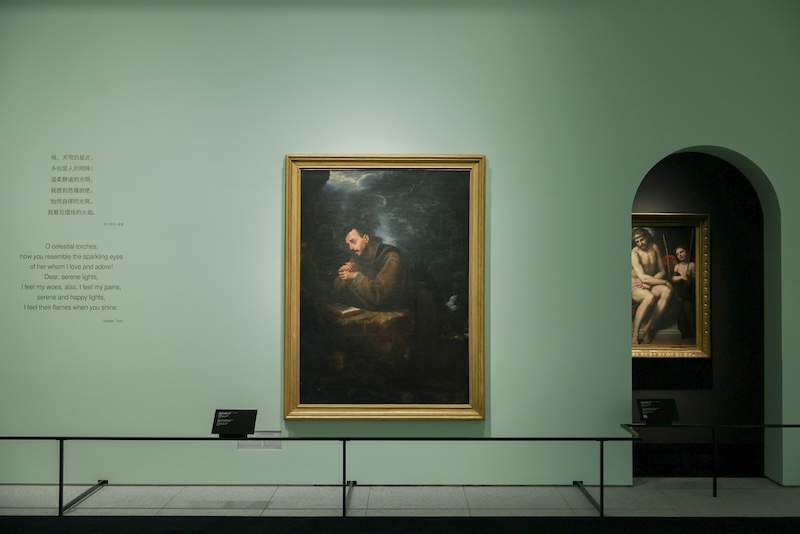
"Caravaggio and the Miracle of the Baroque" exhibition view, Pudong Art Museum, 2023
Although this exhibition focuses on Baroque paintings, Baroque architecture, music, costumes and other elements are also included in the paintings. In the exhibition, "Aeneas Escapes from Troy" by Federico Barosi (approximately 1535-1612) (1598) is an important collection of the Galleria Borghese and a continuation of the Renaissance and Baroque styles. The technique of light in Caravaggio's painting is transformed here into a fire that illuminates the painting in the distance. Baroque is also considered to foreshadow Rubens' Baroque style.
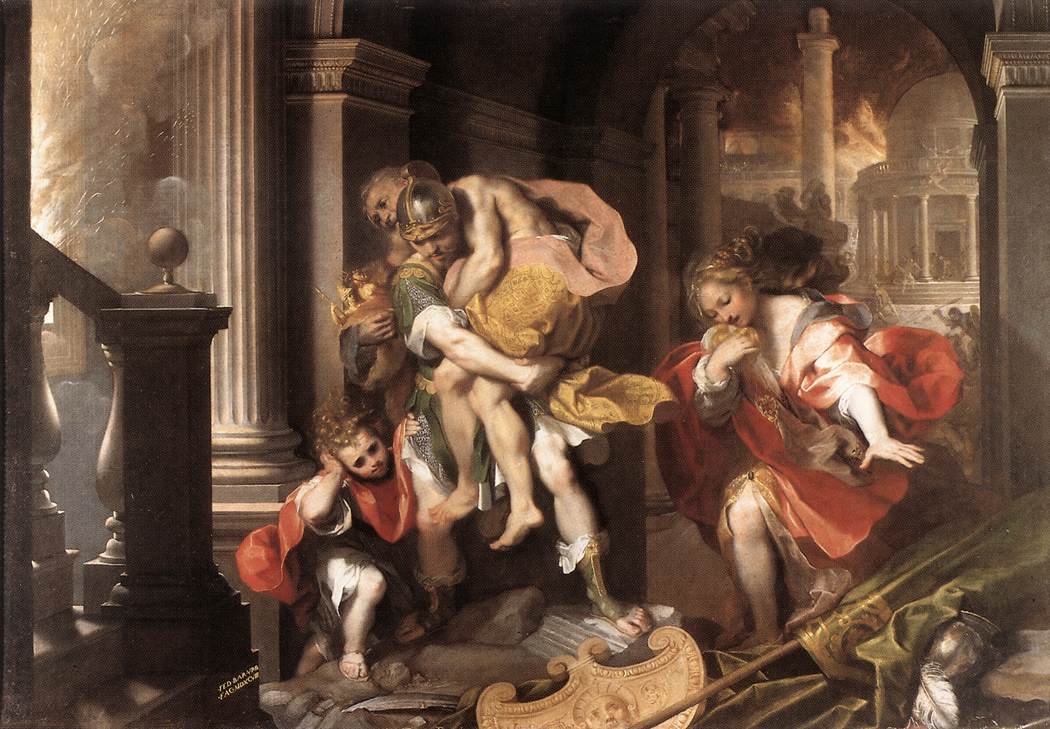
Federico Barosi, "Aeneas's Flight from Troy", 1598
There are two works related to the concert in the exhibition. One is "Concert (The Stolen Amulet)" by Gerardo at Night (ca. 1620-1630) by Gerrit van Hunthorst. In the painting, the boy is attracted by the music, and the girl is stealing the man's earrings. The work is also reminiscent of Caravaggio's "The Card Gambler" (c. 1595).

Gerardo at Night (Gerrit van Hunthorst), Concert (The Stolen Amulet), circa 1620-1630
And what is the music in the painting? Is it possible that it is the music that fills my ears in the exhibition hall? According to reports, the background music played in this exhibition comes from Monteverde, who was a contemporary of Caravaggio and a musician in the Baroque period. In addition, Giovanni Lorenzo Bernini, who was born in Naples in 1598, was a master of integrating painting, sculpture and architecture. When he was young, he participated in the design of the most representative Baroque building - St. Peter's Basilica in Rome; and as a great painter, he innovated the tradition in portraiture and made considerable achievements. Among the paintings on display, "Self-Portrait in Maturity" is well-known for being printed on the Italian banknote of 50,000 lire. It is also the pinnacle of Bernini's self-portrait and enjoys a high reputation.
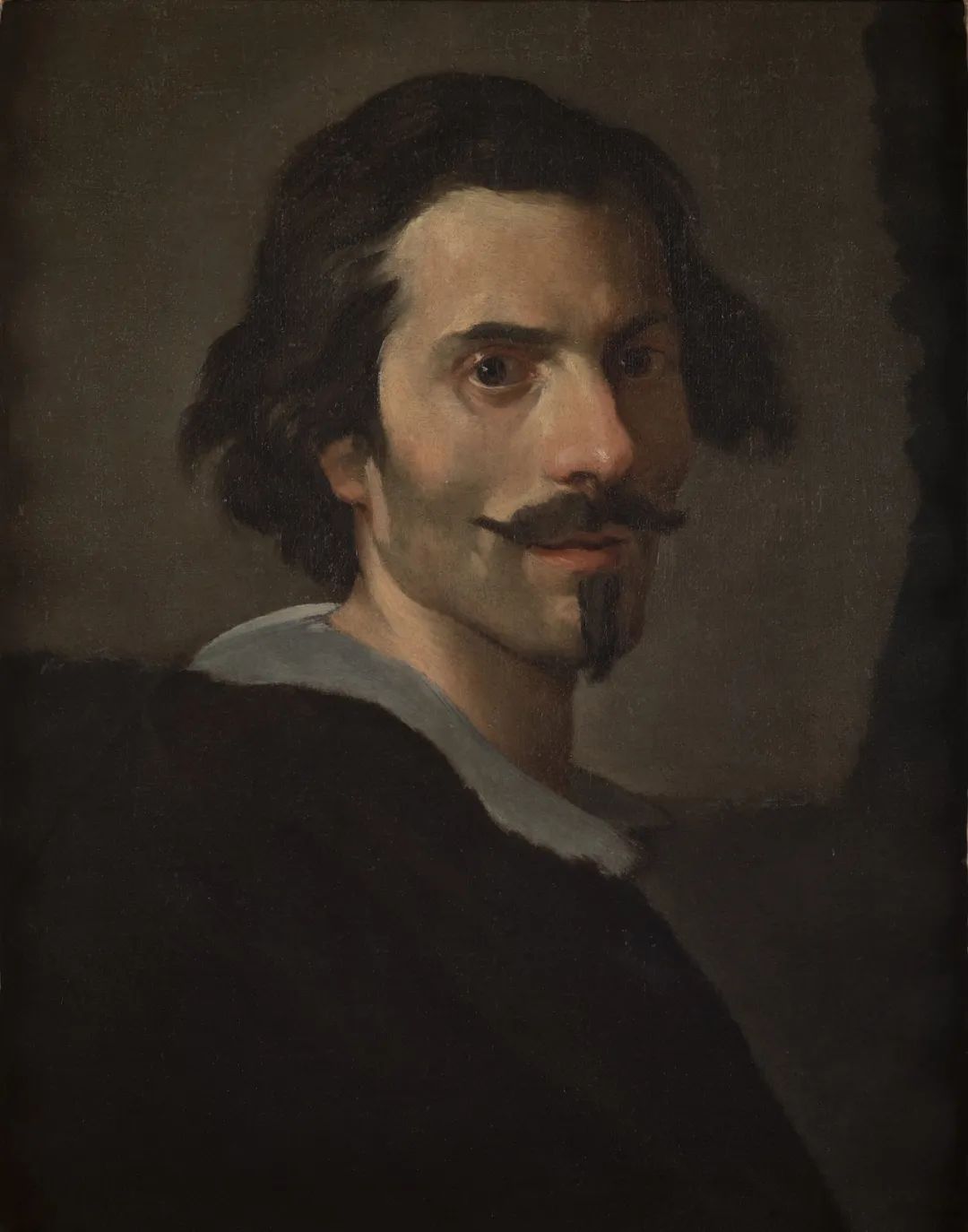
Giovanni Lorenzo Bernini (Naples, 1598 - Rome, 1680), Self-Portrait in Maturity, circa 1635-1640
"This exhibition is a tribute to various forms of Baroque art. It shows the eternal dialogue between the past and the present, as well as the different artistic personalities of that era. It also presents a panoramic view of the artistic confusion prevalent in that era. The background of great historical changes made the art of this period full of continuous inspiration." Darenli said. In this regard, Francesca Cappelletti, Director of the Borghese Art Museum in Rome, said: “We are very happy to hold this exhibition at the Pudong Art Museum, and we sincerely thank the Pudong Art Museum for giving us this opportunity to showcase Borghese art. It is a great opportunity to introduce Italian art to Chinese audiences.”
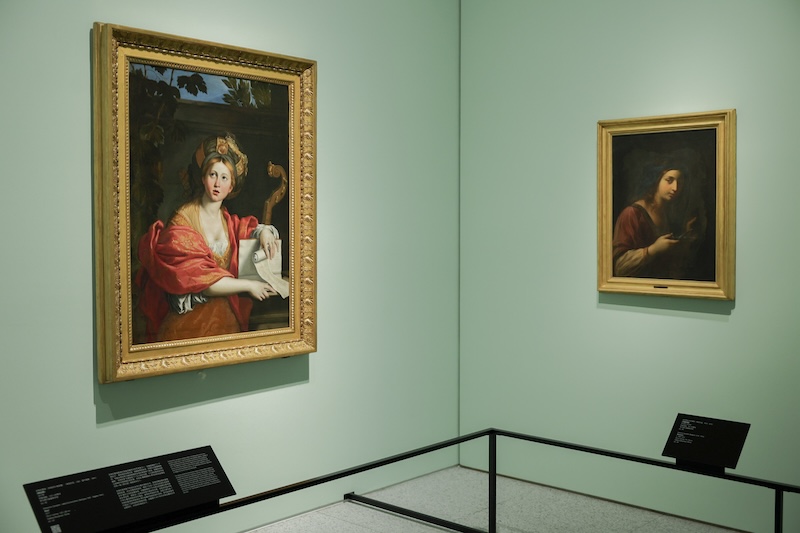
"Caravaggio and the Miracle of the Baroque" exhibition view, Pudong Art Museum, 2023
Several videos played during the exhibition also let the public know more about Baroque art, Caravaggio and the Borghese Gallery. The display of this exhibition is jointly designed by Aldo Cibic and Joseph Dejardin. "The axis of the nave-style corridor moves between Baroque spaces, and then uses the concept of 'enfilade' to establish the layering of the space and focus the visitors' sight. At the same time, rich Baroque architectural details are referenced, As visitors immerse themselves in this exhibition, they seem to be transported to a different era, experiencing the complexity of life at that time reflected on the canvas." Just as a key feature of the Baroque style was illusionism, artists of the time often used perspective to create stunning effects. The integrity of the curation and design of this exhibition is also the creation of a certain "illusion" to a certain extent, inviting people to travel back to the Baroque era full of miracles, explore, think together, and re-appreciate artistic communication and The power to transcend boundaries.
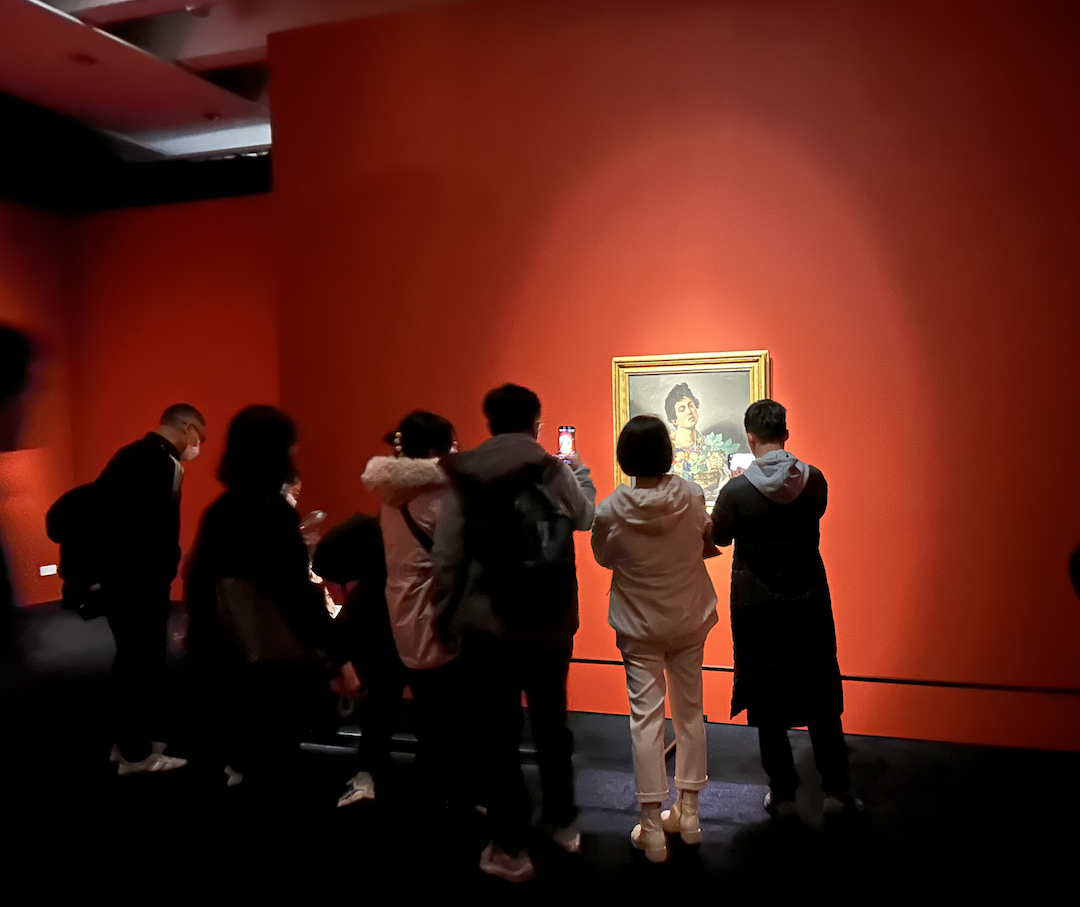
exhibition site
Note: The exhibition is jointly organized by Pudong Art Museum and Galleria Borghese in Rome, with strong support from the Consulate General of Italy in Shanghai, the Cultural Section of the Consulate General of Italy in Shanghai, the Italian Ministry of Culture, the Directorate General of Museums of the Italian Ministry of Culture, and Mondo Mostre in Rome. The exhibition will last until April 12, 2024.


